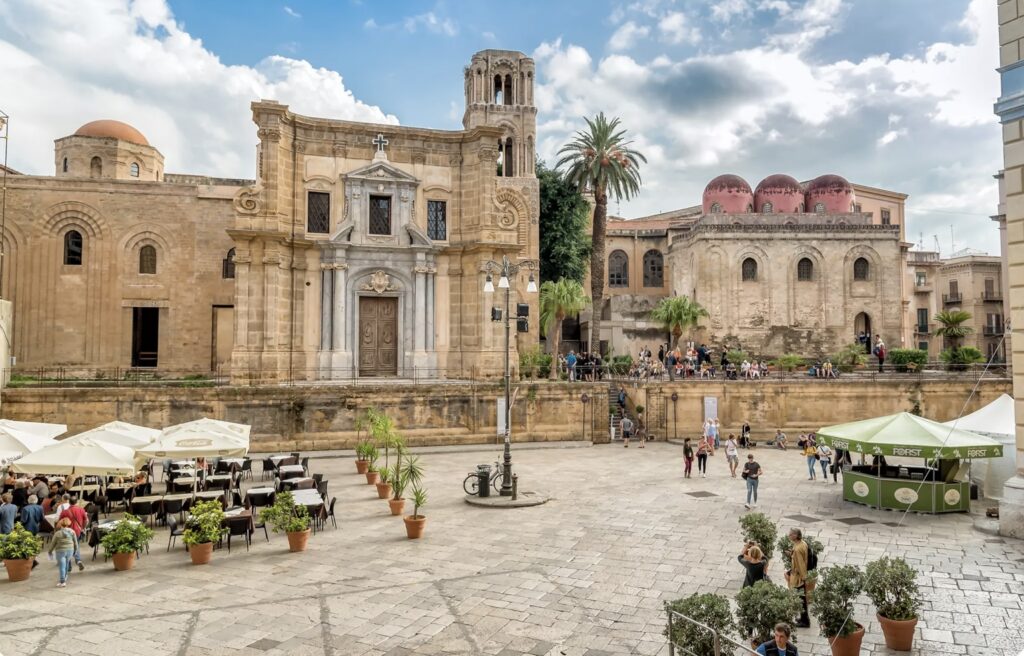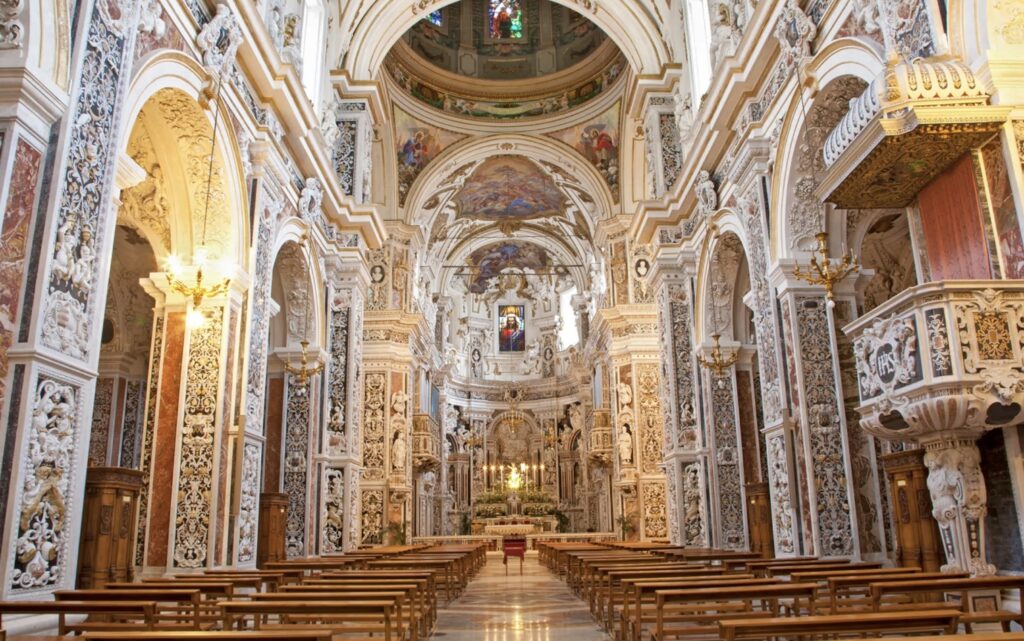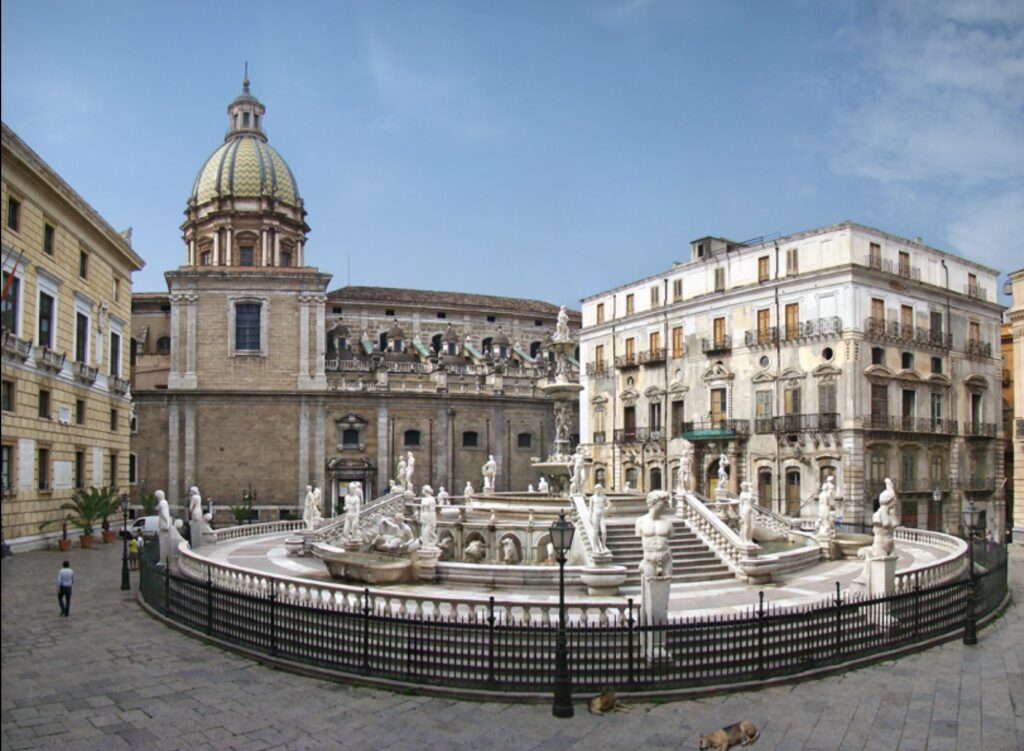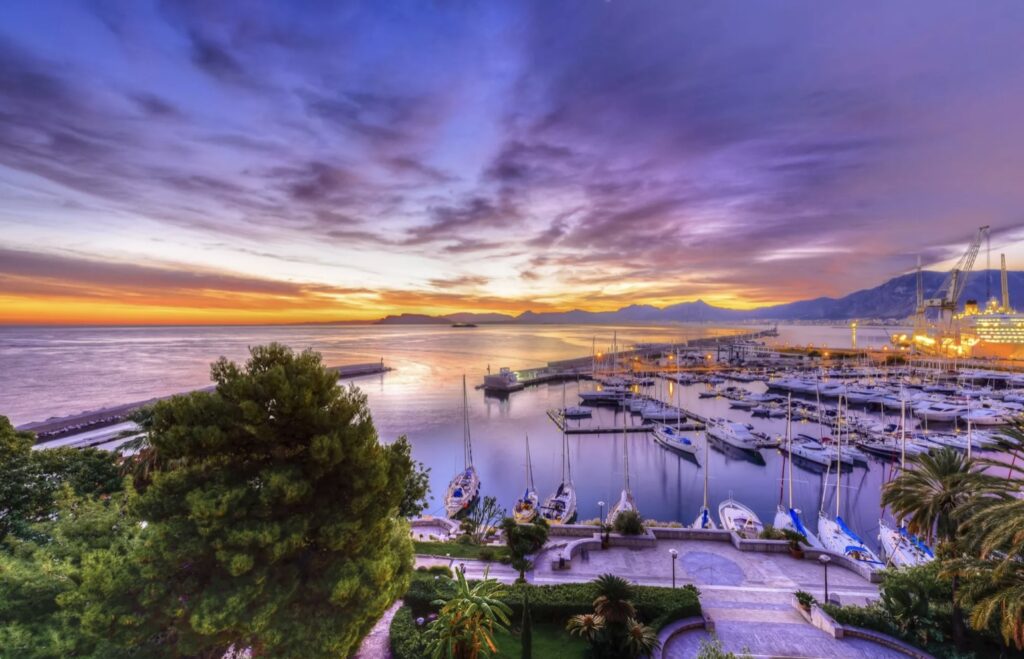ChatGPT:Palermo, the capital of Sicily, is a vibrant city known for its rich history, diverse architecture, and lively culture. It boasts a mix of Arab, Norman, and Baroque influences, evident in landmarks like the Palermo Cathedral and the Palatine Chapel. The city is famous for its bustling markets, such as Ballarò and Vucciria, offering a taste of local life with an array of street food and fresh produce. Palermo’s coastal location also provides beautiful views of the Mediterranean, making it a captivating destination for visitors.
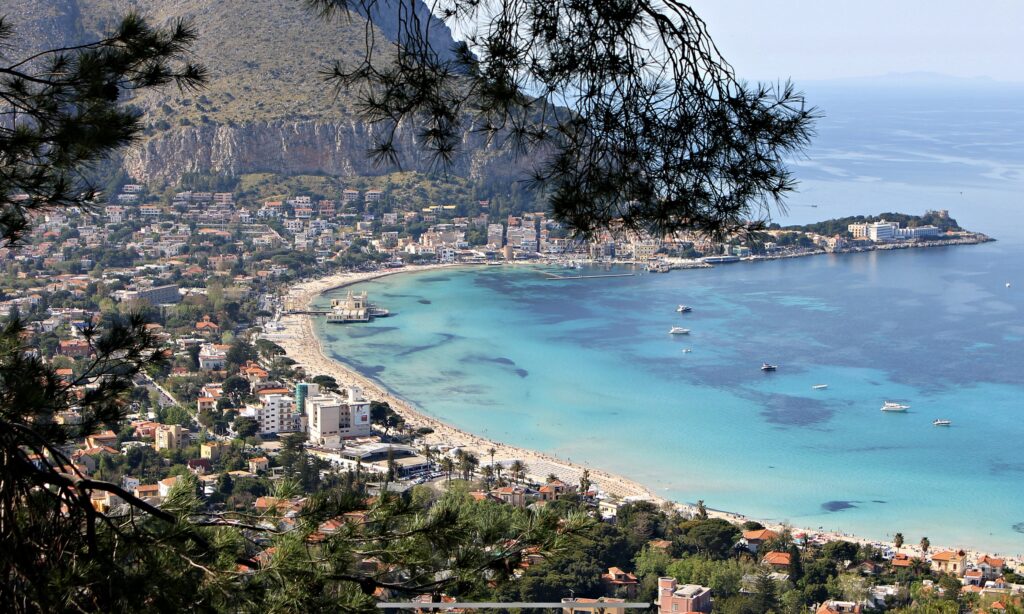
Palermo’s history is marked by a tapestry of cultures and civilizations. Founded by Phoenicians in the 8th century BCE, it became an important trade center. Later, under Roman and Byzantine rule, it continued to thrive.
In the 9th century, the Arabs conquered Palermo, transforming it into a major cultural and economic hub. This era saw significant developments in architecture, agriculture, and trade. The Normans took control in the 11th century, blending Arab and Norman styles, as seen in the Palatine Chapel and other architectural marvels.
Throughout the Middle Ages and Renaissance, Palermo was under various rulers, including the Swabians, Angevins, and Spanish. Each left an imprint on the city’s culture and infrastructure.
In modern times, Palermo faced challenges, including the devastation of World War II and economic difficulties. However, it has undergone revitalization, with efforts to preserve its historical heritage and promote tourism. Today, Palermo is a vibrant city that reflects its complex history and diverse cultural influences.
The diverse rulings over Palermo have significantly shaped its features and characteristics:
- Architecture: The city’s architecture is a blend of various styles, including Arab, Norman, Gothic, and Baroque. Notable examples are the Palatine Chapel with its intricate mosaics and the Arab-Norman Cathedral.
- Cultural Fusion: Each ruling brought different cultural influences, leading to a unique fusion in art, cuisine, and traditions. This blend is reflected in local festivals, culinary diversity, and linguistic elements.
- Urban Layout: The city’s layout features a mix of narrow, winding streets from the Arab period and grander avenues and squares introduced during later periods, such as the Spanish rule.
- Religious Influence: Religious architecture from various periods showcases the city’s multicultural religious history, including churches, mosques (later converted), and synagogues.
- Markets and Trade: The tradition of bustling markets, such as Ballarò and Vucciria, stems from Arab influence, continuing as central hubs of daily life and commerce.
These layered influences contribute to Palermo’s distinctive character as a melting pot of Mediterranean cultures.
Here are specific examples of how the diverse rulings have influenced Palermo:
- Architecture:
- Palatine Chapel: A masterpiece of Arab-Norman art, featuring Byzantine mosaics and Islamic architectural elements.
- Palermo Cathedral: Reflects a mix of Gothic, Norman, and Baroque styles, showcasing the city’s architectural evolution.
- Cultural Fusion:
- Cuisine: Dishes like arancini (rice balls) and panelle (chickpea fritters) blend Arab and Italian influences, highlighting the city’s culinary diversity.
- Festivals: The Feast of Santa Rosalia combines religious devotion with local traditions, embodying Palermo’s rich cultural tapestry.
- Urban Layout:
- Quattro Canti: A Baroque square intersecting two major streets, illustrating the city’s blend of narrow medieval alleys and grander avenues from the Spanish period.
- Religious Influence:
- San Giovanni degli Eremiti: A church with Arab-influenced domes, originally a mosque, reflecting the city’s religious diversity and transformation.
- Markets and Trade:
- Ballarò Market: One of the oldest markets, rooted in Arab trading traditions, bustling with vendors offering a variety of local foods and goods, representing the city’s vibrant street life.
These examples illustrate Palermo’s unique blend of historical and cultural influences that define its identity today.
The Antonino Salinas Regional Archaeological Museum in Palermo is one of Italy’s most important archaeological museums, named after the renowned archaeologist Antonino Salinas. Housed in a former 16th-century Olivella convent, the museum boasts an extensive collection of artifacts from various periods, reflecting Sicily’s rich history.
Highlights of the Museum:
- Phoenician and Punic Artifacts: Includes items from ancient settlements like Motya and Solunto, showcasing the island’s early civilizations.
- Greek Collection: Features remarkable sculptures, pottery, and inscriptions, including pieces from the ancient Greek city of Selinunte.
- Roman Artifacts: Contains statues, mosaics, and everyday items from the Roman period.
- Egyptian Collection: Though smaller, it includes significant artifacts like mummies and sarcophagi.
- Architectural Elements: Displays architectural fragments from various historical sites around Sicily.
The museum also offers educational programs, guided tours, and temporary exhibitions, making it a vital center for the study and appreciation of Sicily’s archaeological heritage.
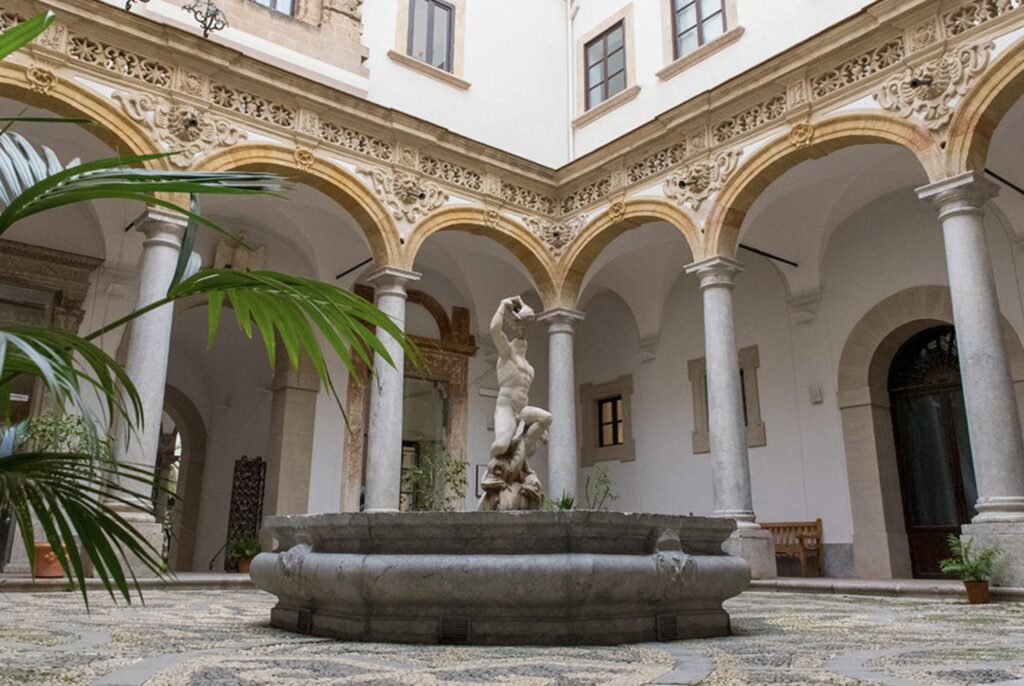
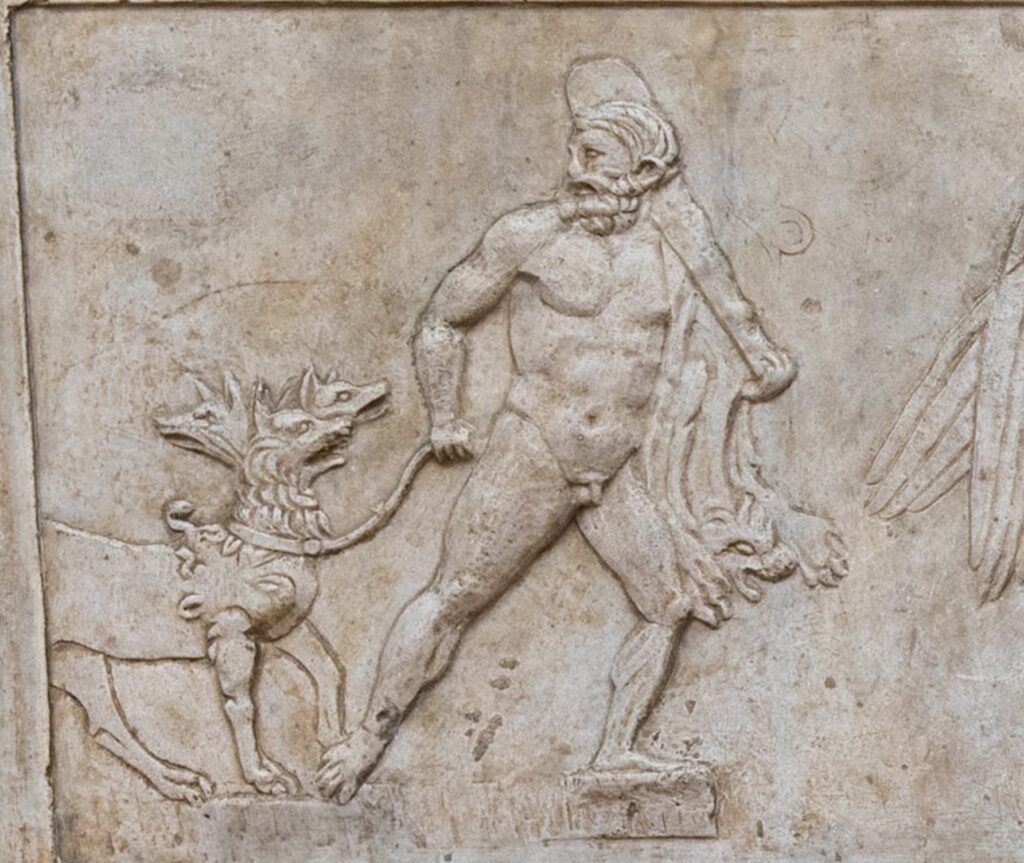
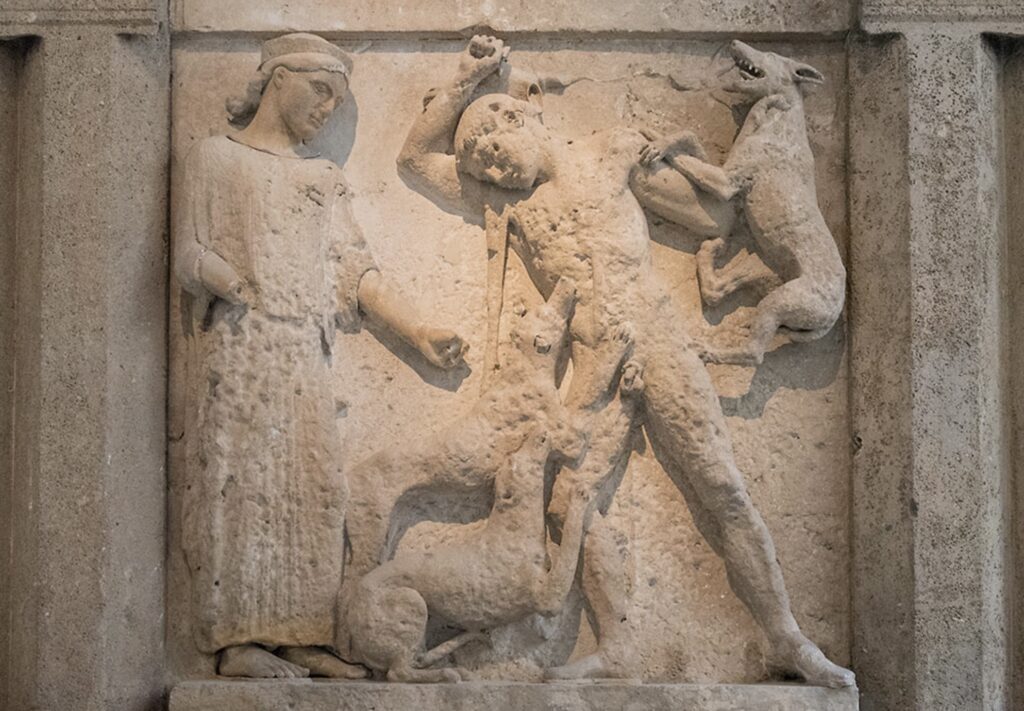
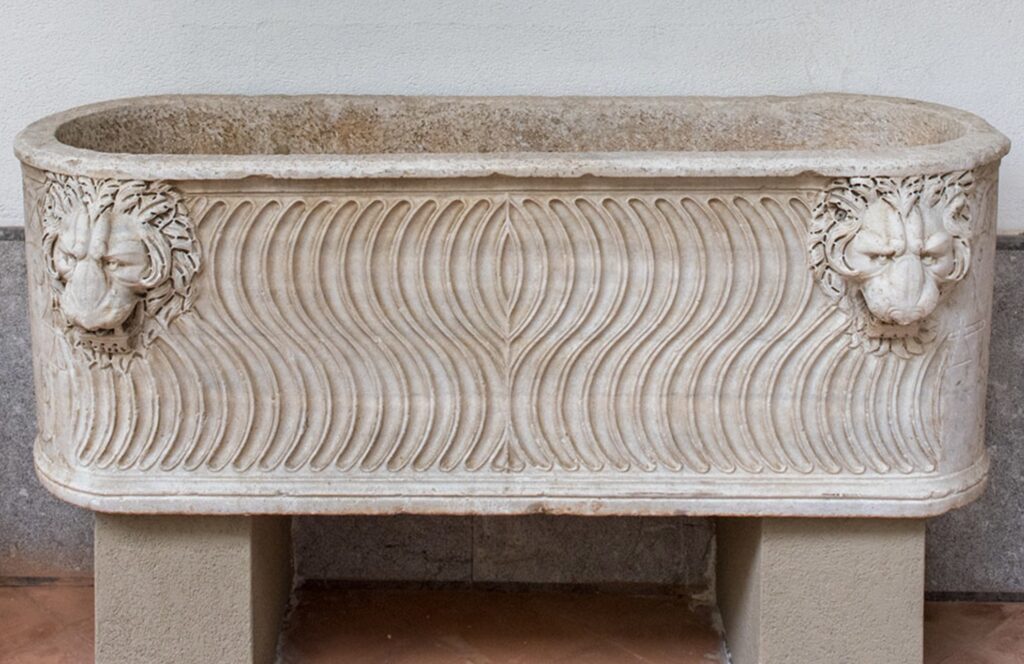
Here are some notable historical monuments and tourist attractions in Palermo:
- Palermo Cathedral: A stunning blend of architectural styles, including Norman and Baroque.
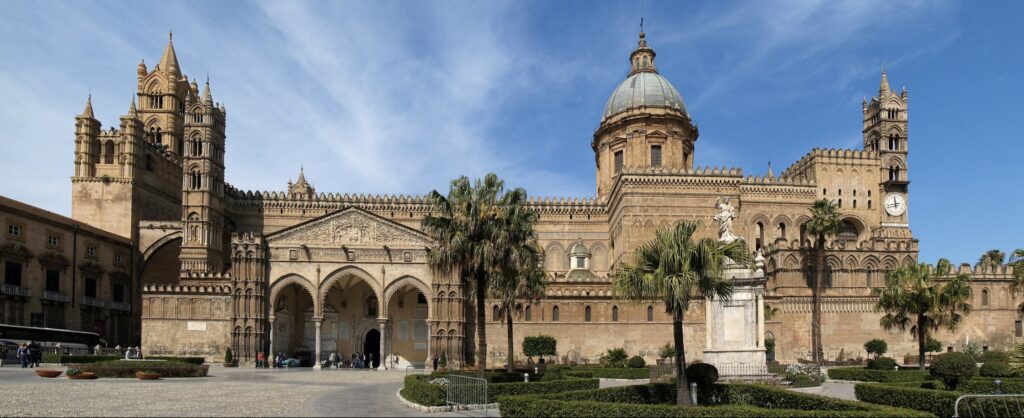
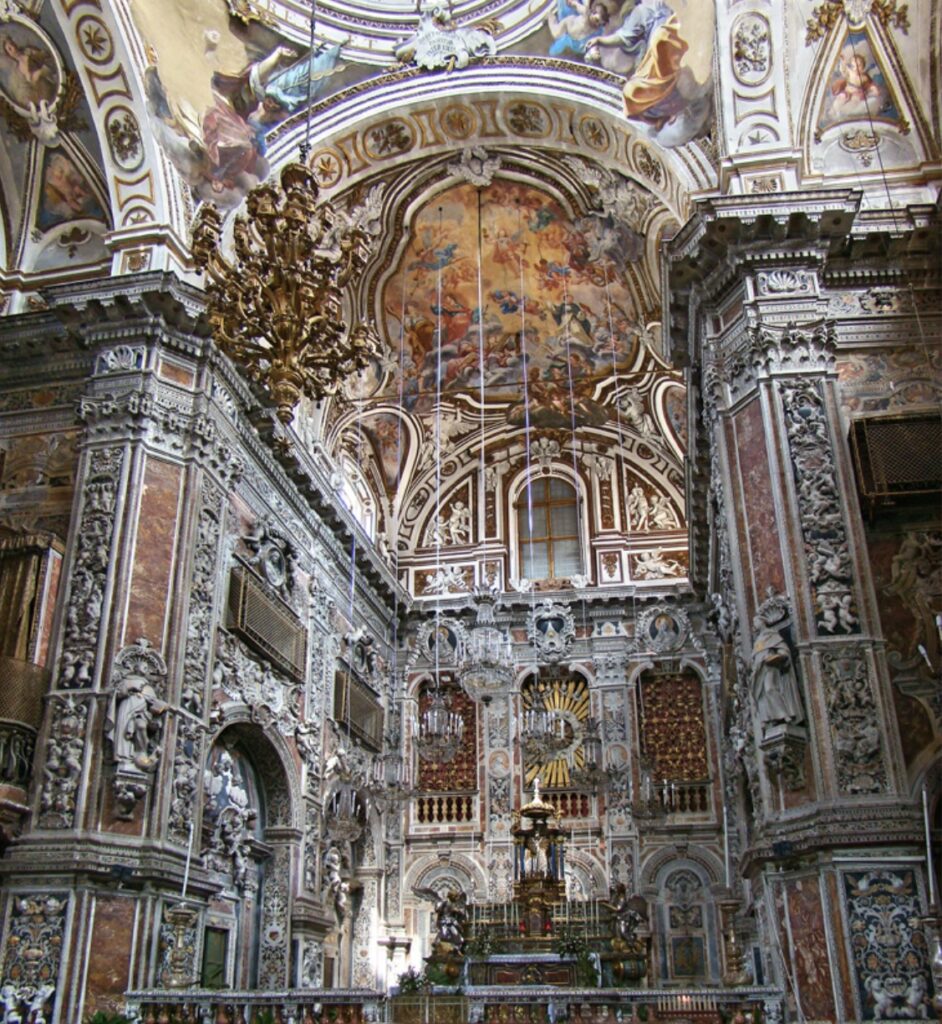
- Palatine Chapel: Famous for its exquisite Byzantine mosaics and Arab-Norman design.
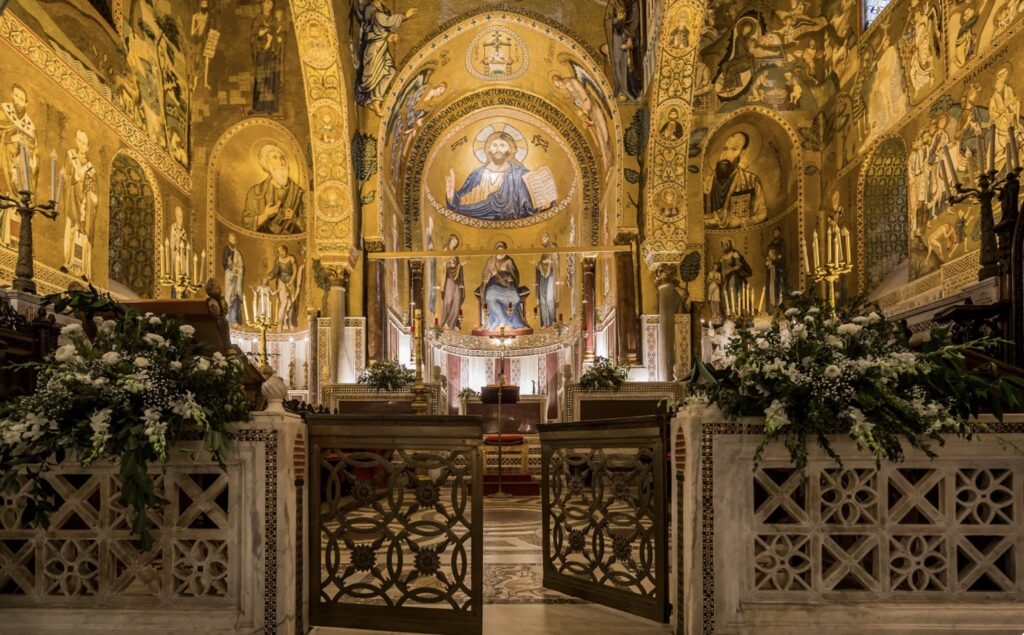
- Quattro Canti: A Baroque square known for its striking statues and fountains.
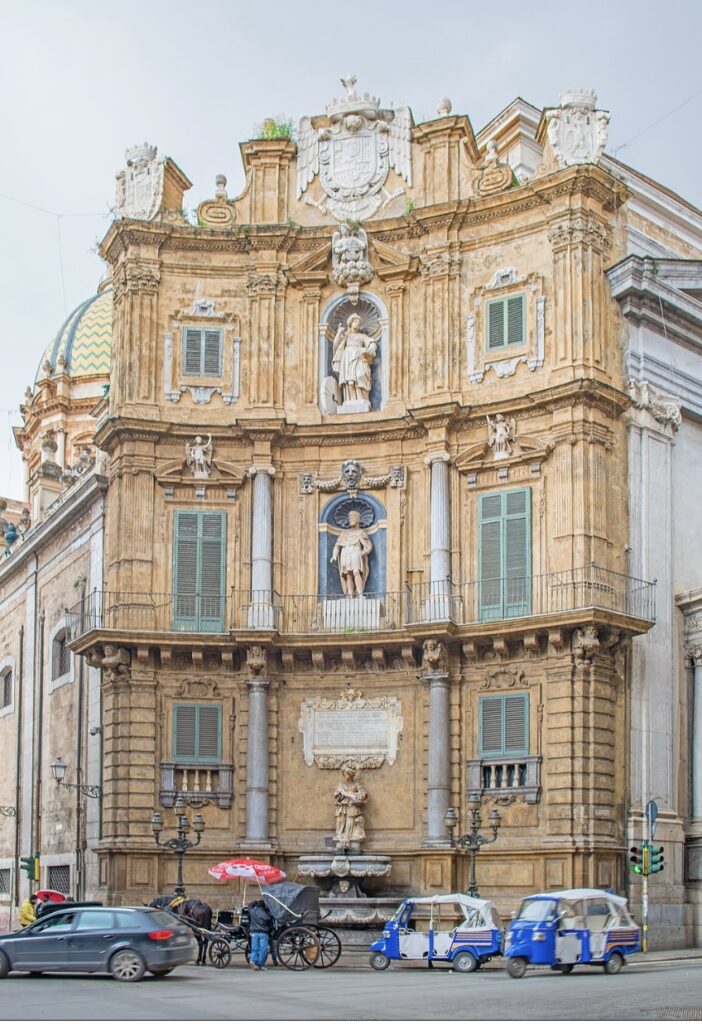
- Teatro Massimo: Italy’s largest opera house, renowned for its grand architecture.
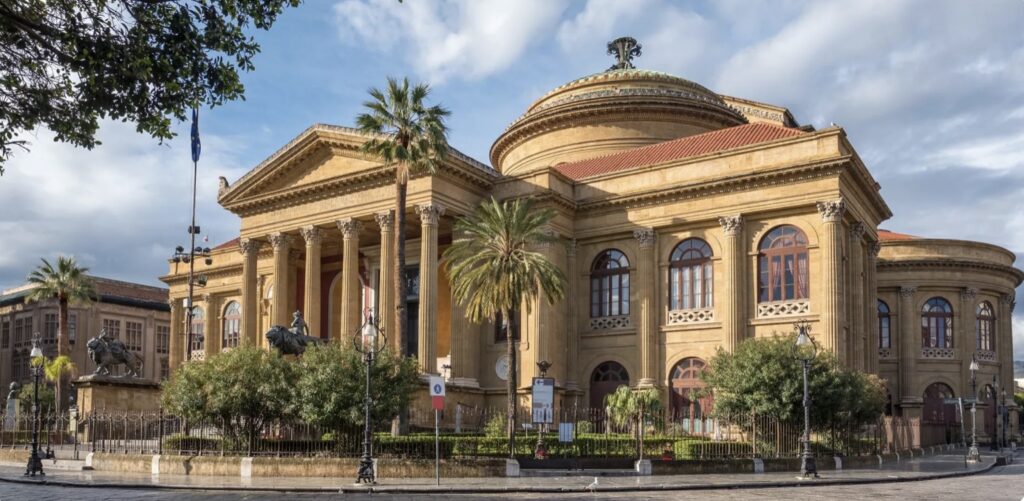
- San Giovanni degli Eremiti: A church with distinctive red domes and a blend of Arab-Norman styles.
- Norman Palace: A royal palace housing the Palatine Chapel, showcasing Norman and Arab influences.
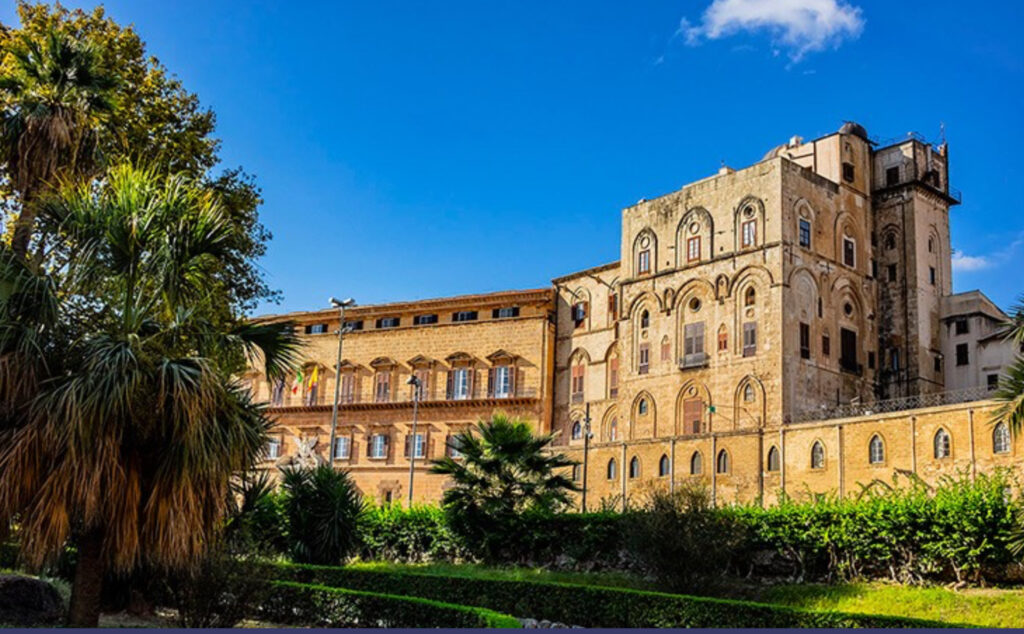
- Capuchin Catacombs: An eerie yet fascinating site with mummified remains displayed in catacombs.
- Ballarò and Vucciria Markets: Bustling street markets offering local food, crafts, and a lively atmosphere.
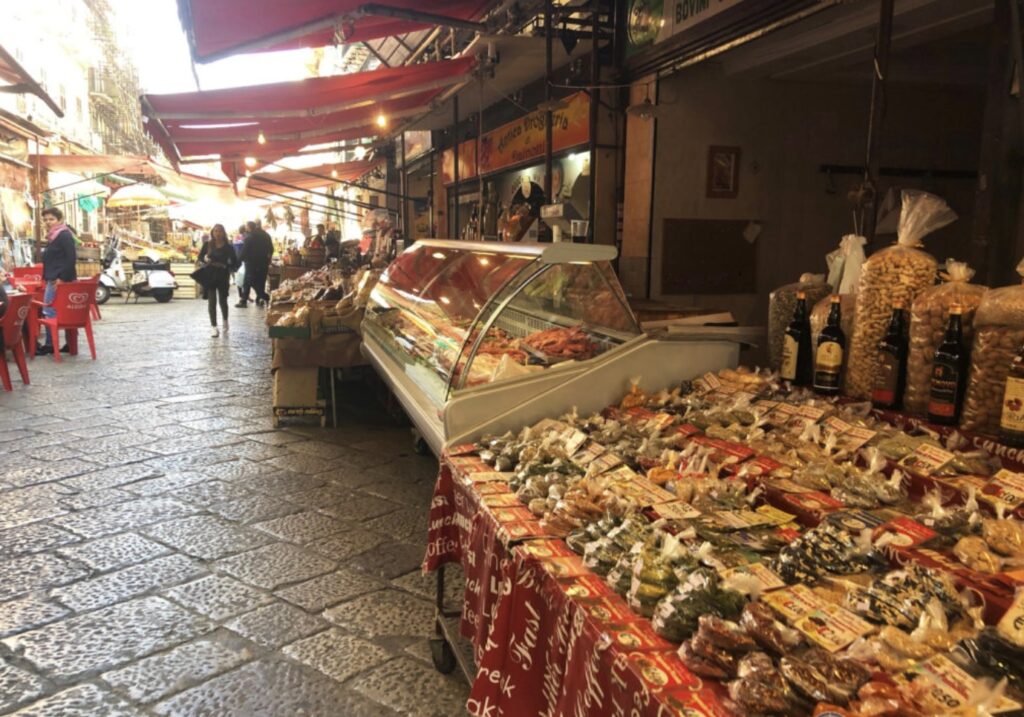
- Zisa Castle: A former Norman royal residence with Islamic architectural features.
- Church of the Martorana: Known for its stunning mosaics and mix of Byzantine and Baroque styles.
These attractions highlight Palermo’s rich historical and cultural heritage.
Here are some local food specialties from Palermo:
- Arancini: Deep-fried rice balls, often stuffed with ragù or cheese.
- Panelle: Chickpea fritters, typically served in a sandwich.
- Sfincione: A thick Sicilian pizza topped with tomatoes, onions, and anchovies.
- Pasta con le Sarde: Pasta with sardines, fennel, pine nuts, and raisins.
- Cannoli: Crispy pastry shells filled with sweet ricotta.
- Cassata: A traditional Sicilian cake made with ricotta, marzipan, and candied fruit.
- Capo: A sandwich filled with milza (spleen) and often served with ricotta or caciocavallo cheese.
- Granita: A semi-frozen dessert made from sugar, water, and flavorings, often served with brioche.
These dishes reflect Palermo’s rich culinary heritage and diverse influences.
Suggest one-day walking itinerary for a history and architecture enthusiast in Palermo:
Morning:
- Palermo Cathedral: Start your day at this iconic structure to explore its diverse architectural styles.
- Norman Palace and Palatine Chapel: Visit for the stunning mosaics and rich history.
Snack Break: Try a cannolo at a nearby café, such as Antica Focacceria San Francesco.
Midday:
- San Giovanni degli Eremiti: Discover the unique Arab-Norman architecture with its red domes.
- Quattro Canti: Enjoy the intersection’s Baroque beauty.
Lunch: Head to Ballarò Market for local specialties like arancini and panelle.
Afternoon:
- Church of the Martorana: Admire its exquisite mosaics and architectural blend.
- Teatro Massimo: Take a guided tour of Italy’s largest opera house.
Evening Snack: Stop at Sfincione Palermo for a slice of the traditional local pizza.
Evening:
- Zisa Castle: End your day with a visit to this former Norman royal residence with Islamic influences.
Dinner: Enjoy a leisurely meal at Trattoria da Pino, featuring Sicilian dishes like pasta con le sarde.
This itinerary covers key historical and architectural sites, with plenty of opportunities to enjoy Palermo’s culinary delights.
